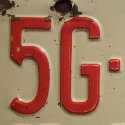Analysts at Cowen say interest in an active/shared RAN solution between tower operators and carriers is on the rise. 'This is exactly in line with the way we're thinking,' says Dish Network's Marc Rouanne.

Just like the tenants of an apartment complex, wireless network operators like AT&T and Verizon pay rent to cell tower landlords for space on their towers.
And one analyst firm suggests that, in the future, those network operators may also rent their 5G radios and antennas from cell tower operators, too.
"We're hearing of increasing interest in providing an active/shared RAN [radio access network] solution for carriers where the tower operator owns the radios/antennas and the carrier provides some type of fee for usage on the network," wrote the financial analysts at Cowen in a recent note to investors. "This appears likely to initially occur using shared spectrum such as [3.5GHz] CBRS and with cable mobile operators who are interested in reducing their MVNO costs – particularly in high usage/population areas. This model is still very nuanced in the US but has had traction in other parts of the world such as in Europe. We expect to hear more about this from tower operators as we go forward."
Some executives in the cell tower industry agree that it's a topic of discussion. "Overall, I would say that statement is accurate," wrote Mark Reudink, VP of technology strategy at Crown Castle, in response to questions from Light Reading about the Cowen report. "Of course, business models still need to be worked out," he added.
Demand from tower companies, operators
Such comments are noteworthy considering Crown Castle is one of the three big public cell tower operators in the US. Moreover, Crown Castle has already shown interest in such deployments. The company announced earlier this year that it owns and operates a wireless network inside a New York City skyscraper at 345 Park Avenue. The 5G-capable, private wireless network runs in the unlicensed 3.5GHz CBRS spectrum band and handles "smart building" operations including tracking indoor air quality, tenant traffic and elevator wait times.
But cell tower operators aren't the only ones in the 5G industry interested in the possibility of changing the dynamics of network ownership.
"From an architecture point of view, this is exactly in line with the way we're thinking," Marc Rouanne, Dish Network's chief network officer, told Light Reading in response to questions about the Cowen report. He said Dish prefers the "pay for what you use" approach to network operations, as highlighted by the company's new deal for cloud computing services from Amazon Web Services (AWS).
"We can share the investments," Rouanne said of a model where Dish would rent 5G towers as well as equipment. "It's very good for consumers and enterprises." He continued: "We're all for that, as long as the business rules work."
Dish has already agreed to purchase 5G equipment from the likes of Fujitsu and MTI, and has inked tower rental contracts with Crown Castle, American Tower and others. The company intends to switch on a 5G network in Las Vegas later this year.
A model wherein network operators rent both 5G equipment and cell towers would represent a dramatic break from the business model that currently dominates the US market. Big network operators like Verizon and T-Mobile traditionally rent space on cell towers – measured by the foot – and then purchase their equipment from suppliers like Nokia, Ericsson and Samsung. It's like a Marvel comics fan renting a DVD player but purchasing DVD movies like The Avengers.
The new model suggested by the Cowen analysts – if it were to take off – would position cell tower companies like Crown Castle as the direct customers of 5G equipment suppliers like Ericsson and Nokia. Network operators like AT&T and Verizon, meantime, would simply pay for access to both towers and the equipment adorning them. It would be like that Marvel fan simply paying for access to the Disney+ streaming video service every month in order to watch The Avengers.
CBRS as the instigator
As the Cowen analysts noted, the introduction of CBRS spectrum could represent the catalyst for this new business model. For example, cable companies like Comcast and Charter Communications spent hundreds of millions of dollars on CBRS spectrum licenses last year, and will likely use those licenses to construct small-scale 5G networks covering their mobile customers. Doing so would reduce the MVNO expenses they incur to piggyback on Verizon's mobile network as MVNOs.
If Comcast and Charter could rent their 5G equipment instead of buying it, they could essentially move that cost from their capital expense (capex) column and into their operating expense (opex) column.
As Ken Schmidt of cell tower consultation company Steel in the Air explained, it's a model that is already employed in parts of Europe, in part due to regulations there. Moreover, he noted that Cingular and T-Mobile attempted a similar setup in the US more than a decade ago when they inked a network-sharing agreement prior to the merger of AT&T and Cingular.
But Schmidt suggested the "network as a service" notion is one that has never found any solid footing in the US market due to operators' general desire to own as much of their networks as they can, in order to derive a more competitive position. In written responses to questions from Light Reading, he said it's a concept "typically propagated (pun intended) by the tower companies who claim that this is a way for wireless service providers to deploy their network in a less capex intensive manner."
He said there may be some interest in the concept among operators in rural areas, but said he hasn't seen any indications that it's a model that's gaining any steam.
Related posts:
— Mike Dano, Editorial Director, 5G & Mobile Strategies, Light Reading | @mikeddano
About the Author(s)
You May Also Like











